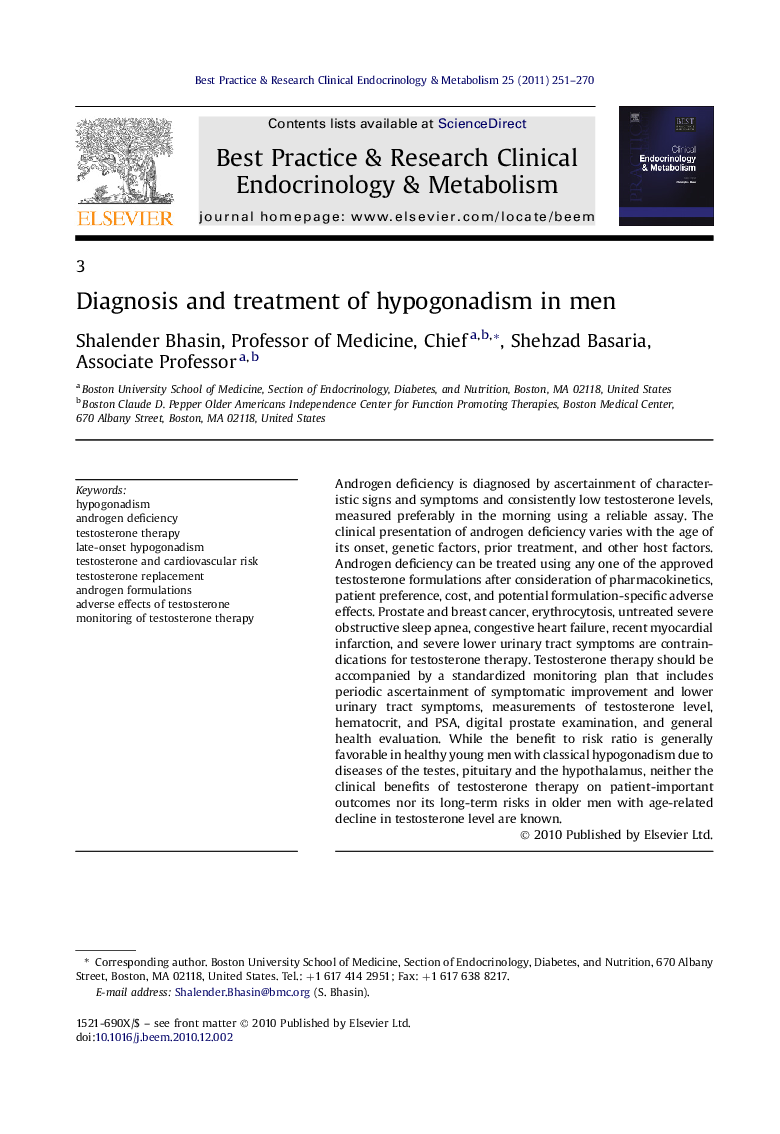| کد مقاله | کد نشریه | سال انتشار | مقاله انگلیسی | نسخه تمام متن |
|---|---|---|---|---|
| 2792029 | 1154995 | 2011 | 20 صفحه PDF | دانلود رایگان |

Androgen deficiency is diagnosed by ascertainment of characteristic signs and symptoms and consistently low testosterone levels, measured preferably in the morning using a reliable assay. The clinical presentation of androgen deficiency varies with the age of its onset, genetic factors, prior treatment, and other host factors. Androgen deficiency can be treated using any one of the approved testosterone formulations after consideration of pharmacokinetics, patient preference, cost, and potential formulation-specific adverse effects. Prostate and breast cancer, erythrocytosis, untreated severe obstructive sleep apnea, congestive heart failure, recent myocardial infarction, and severe lower urinary tract symptoms are contraindications for testosterone therapy. Testosterone therapy should be accompanied by a standardized monitoring plan that includes periodic ascertainment of symptomatic improvement and lower urinary tract symptoms, measurements of testosterone level, hematocrit, and PSA, digital prostate examination, and general health evaluation. While the benefit to risk ratio is generally favorable in healthy young men with classical hypogonadism due to diseases of the testes, pituitary and the hypothalamus, neither the clinical benefits of testosterone therapy on patient-important outcomes nor its long-term risks in older men with age-related decline in testosterone level are known.
Journal: Best Practice & Research Clinical Endocrinology & Metabolism - Volume 25, Issue 2, April 2011, Pages 251–270